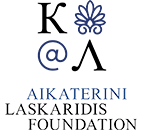Peloponnese (1631 Subjects)
1. Plan of the ancient theatre of Sicyon, 1829. 2. Section of part of the theatre. 3-6. Reconstruction and architectural features of the entrance and the main part of the Roman subterranean gallery which provided access to the theatre. 7. Section of seating row. 8-10. View, plan and section of the retaining wall of the stadium of Sicyon.
1. Relief incorporated into wall, seen by the author at a house in Xylokastro. 2, 3. Bases of sculptures seen by the author at church at the village of Basiliko (ancient Sicyon).
1. Cave of the oracle of Heracles Vouraikos close to Aigion 2. Medieval relief seen by the author in Aigion. 3. Ancient relief seen by the author at church in Aigion. 4. Inscription seen by the author at the now-lost church of the Presentation of the Virgin (Eisodia Theotokou), Aigion. Today a building by Ernst Ziller stands on the site of the church.
Medieval inscriptions and relief seen by the author at the castle of Patras.
Fragments of Roman statues from Patras. Image 3: details from the Tower of Patrinela at the castle of Patras.
1. View of the castle of Patras. 2-6. Plan and architectural details of Roman funerary monument, Patras.
Roman antiquities seen by the author at the Monastery of Loukou, Cynouria, Peloponnese.
Roman antiquities from Loukou, Cynouria, Peloponnese.
Roman antiquities from Loukou, Cynouria, Peloponnese.
Roman antiquities from Loukou, Cynouria, Peloponnese.
Port of Patras, 1861. On the right, the walls of the city fortress.
Port of Patras, 1861. On the right, the city fortress.
Fragmetns from the archeological findings at Mycenae.
Plan of the excavation site of Heinrich Schliemann at Mycenae Acropolis. Plan of the Acropolis of Mycenae.
1, 2: Plan and section of the Tholos Tomb of Mycenae or Treasury of Atreus. 3, 4: Mycenean tombs at Grave Circle A of Mycenae.
1. The golden funerary mask known as Mask of Atreus, discovered at Mycenae. 2. The Bull of Mycenae. 3, 4. Golden votive offerings from Mycenae. 5, 6. Golden jewellery from Mycenae.
General view of the Acropolis of Mycenae.
View of the excavation site of Heinrich Schliemann at Mycenae Acropolis: Funerary monuments.
View of the village of Mycenae. In the background, the acropolis.
Landscape with the acropolis of Mycenae.
The draughtsman of “The Illustrated London News” sketching the Lion Gate of Mycenae.
The excavations of Heinrich Schliemann at the acropolis of Mycenae.
The entrance to the Tholos Tomb of Mycenae or Treasury of Atreus, from the interior of the monument.
Interior of the Tholos Tomb of Mycenae or Treasury of Atreus.
The walls of ancient Tiryns with the entrance to the masonry tunnel.
Pyramid of Hellinikon, Argos.
Part of the ancient walls of Larissa Acropolis in Argos. Plan of the Pyramid of Hellinikon, Argos.
Part of the ancient wall of the acropolis of Nafplio (Acronauplia).
Entrance to the Tholos Tomb of Mycenae, or Treasury of Atreus.
Funerary monument at the acropolis of Mycenae.































